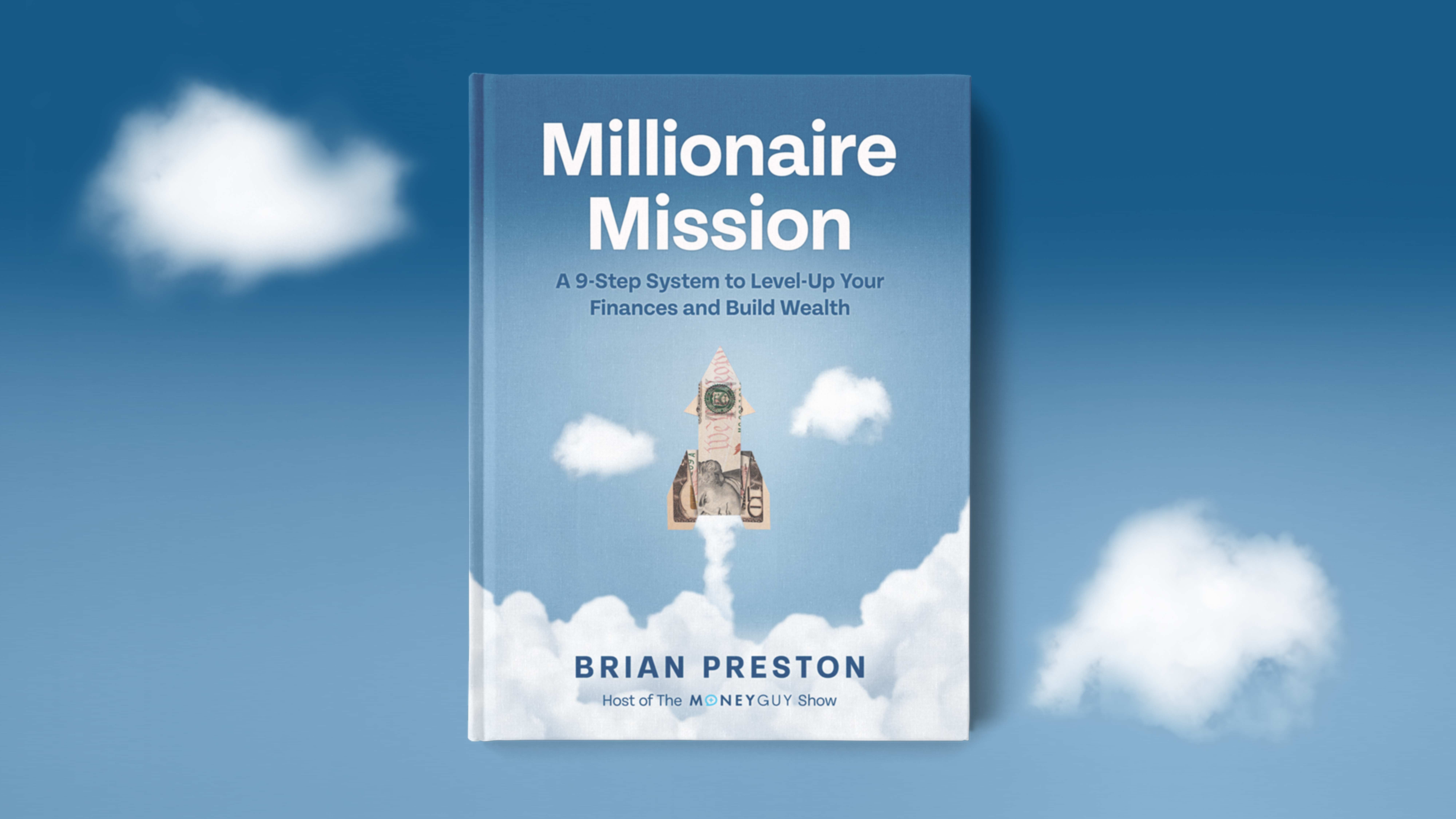
Change your life by
managing your money better.
Subscribe to our free weekly newsletter by entering your email address below.

Subscribe to our free weekly newsletter by entering your email address below.
What if I told you that income is not the biggest factor in whether you become a millionaire?
Hold up—wait a minute—something ain’t right.
Most people assume you need a high salary to build wealth. But I’m excited to tell you that the data suggests otherwise.
Today, we’re going to walk through:
How wealth is actually built
How you can build wealth—even if you never earn six figures
But first, let’s lay some groundwork.
One of the best examples of wealth building on a modest income comes from the Ramsey Solutions Millionaire Survey. The results were honestly pretty shocking.
Key finding:
The third most common profession for millionaires was teachers.
And yet, the median salary for K–12 teachers in the U.S. is only about $63,000 (according to the Bureau of Labor Statistics).
Well, this stat isn’t adjusted per capita—so yes, there are more teachers than, say, doctors. But the takeaway still holds:
Teachers have a higher likelihood of becoming millionaires than their income range would suggest.
The first reason is that teachers often have built-in retirement pension plans, which create what’s known as forced scarcity.
It’s when money is automatically withheld from your paycheck for retirement contributions.
You end up living on less than you make, and saving more—without needing to make repeated active decisions.
Forced scarcity:
Protects you from your own spending habits
Automates your wealth-building
Allows your future self to benefit with little effort from your present self
Even if you’re not a teacher, you can set up forced scarcity by automating:
Retirement contributions
Savings transfers
Other paycheck withholdings
Another key advantage teachers often enjoy is starting their careers (and savings) early.
According to the Department of Education:
About half of new teachers start their careers at age 22 or 23
Compare that to the average American, who doesn’t begin saving for retirement until their early 30s.
Starting early gives your money extra time to grow via compound interest, which makes a massive difference—even with small contributions.
If you’re trying to build wealth on a modest income, here’s what to do:
Automate your contributions (forced scarcity)
Start as early as possible—even with small amounts
Stay consistent
The secret is behavior and systems, not a huge salary.
Many people believe that if they can’t save a large amount right away, they’re already behind. But that’s not true.
The 1% rule is one of the most powerful, underused strategies:
Start with what you can, then increase your savings by 1% each year until you hit your goal.
Each starts saving at age 25:
Saver A: Saves 3% of income consistently
→ Ends up with ~$930,000
Saver B: Saves 10% from the start
→ Ends up with ~$2.3 million
Saver C: Starts at 3%, increases 1% each year until reaching 10%
→ Ends up with ~$2.1 million
Despite starting smaller, Saver C almost catches up to Saver B!
This demonstrates the power of auto-escalation: small, manageable improvements that make a huge impact over time.
Although everything so far assumes no income change, your income will likely grow over a 30–40 year career.
And when it does, the effects can be massive.
Starting salary: $60,000
Savings: Max out Roth IRA at $7,000/year ($583/month) = 12% savings rate
Use the 1% rule to increase to a 20% savings rate
Timeframe: 35-year career
Expected return: 8% (factoring in inflation)
Result:
You could end up with ~$2.24 million.
Wages could grow to $84,000/year, and following the 4% safe withdrawal rule, you could retire with ~$90,000/year in income—more than your salary ever was.
Building wealth isn’t about a high income—it’s about:
Smart financial behaviors
Automation
Consistency
Time in the market, not timing the market
Making incremental improvements year after year
Building meaningful wealth is:
Achievable on any income
Powered by habits and systems
A long game—requiring patience and discipline
You don’t need dramatic raises or windfalls. You need:
Early action
Gradual improvement
Time for your money to grow
Subscribe on these platforms or wherever you listen to podcasts! Turn on notifications to keep up with our new content, including:
What if I told you that income is not the biggest factor in whether you become a millionaire? Hold up, wait a minute—something ain’t right. Most people assume you need a high salary, but I am so excited to tell you that the numbers would suggest otherwise. Today, we’re going to walk through exactly how wealth is built and how you can build wealth for yourself even if you never make six figures. And we’ll get into those strategies in a minute, but first we have to lay some groundwork.
One of the best examples of people building wealth on modest incomes actually comes from the Ramsey Solutions Millionaire Survey. The results were honestly pretty shocking. That study, which at the time was the largest ever study of millionaires, found that the third most common profession for millionaires was teachers—even though the median salary for K–12 teachers in the U.S. is only around $63,000, according to the Bureau of Labor Statistics.
So how does teaching produce so many millionaires, and what can we learn from that? Well, it’s important to note this stat is not adjusted per capita, so it could be slightly skewed by the fact that there are more teachers than high-earning professionals like doctors, for example. However, the takeaway still rings true: teachers have a higher likelihood of becoming millionaires than their income range might suggest, and it’s largely due to two key factors.
The first is that teachers have a built-in mechanism through their retirement pension plans to create what’s called “forced scarcity.” And that’s our first strategy: forced scarcity. Forced scarcity is the psychological and behavioral effect created when money is automatically withheld from your paycheck for retirement contributions, which ultimately reduces the amount of income that you’re able to see or able to spend. It forces you to live on less than you make and save more without having to make repeated active choices.
Forced scarcity weaponizes automation to protect you from yourself. That shrinks the paycheck that you see so that your future self benefits without your present self having to think too hard about it. And you can do this for yourself on your own. Once you set up forced scarcity through automatic contributions and paycheck withholdings, your wealth building becomes an automated process.
Teachers also tend to benefit from another key advantage that we can learn from, which may be a bit less obvious at first glance. While the role itself might not be known for immediate financial rewards, the profession shares a unique characteristic with some of the most successful wealth builders: they get started early.
Starting early is a crucial advantage that teachers typically enjoy in their wealth-building journey. According to the Department of Education, about half of new teachers begin their careers at just the ages of 22 or 23. This early start proves incredibly valuable, as even modest retirement contributions of 3% or 5%—whatever the plan stipulates—in those early years provide a significant advantage, especially considering the average American doesn’t begin saving for retirement until their early 30s.
By giving their investment dollars an extra decade to work and grow, teachers can harness the power of compound interest more effectively than many other professionals. So what does this mean for you if you’re trying to build wealth on a modest income? Well, it’s simple. By implementing forced scarcity through automatic contributions and starting as early as possible, even with small amounts, you are following the same blueprint that’s helped countless teachers and other modest income earners build significant wealth.
The key is consistency and automation—not some huge salary. These principles work regardless of your income level because they focus on behavior and systems rather than raw earning power. Just like teachers, you can leverage these advantages by setting up automatic contributions and starting today rather than waiting for some imaginary perfect time in the future when you might be earning more.
And despite what you might believe, a little truly goes a long way. This is where the 1% rule comes in. Most people assume if you can’t save a significant amount right away, you’re already behind—but the numbers, they tell a different story. In fact, one of the most powerful wealth-building strategies doesn’t require you to start with big contributions. It simply requires you to start, period. Then from there, you slowly improve over time.
To illustrate this, a fascinating study from JP Morgan Asset Management modeled three hypothetical savers, each starting at age 25. One saver consistently contributed just 3% of their income. Another started with a strong 10% savings rate. And then the third started with a modest 3%, but they increased their contributions by 1% each year until they reached 10%. It’s the 1% rule in action: you just get 1% better each day, each month, each year.
The results? The saver who stuck at 3% ended up with around $930,000, while the 10% saver finished with roughly $2.3 million. You would expect that differential. But here’s what’s really exciting: the third saver—the one who gradually increased their contributions—ended up with approximately $2.1 million, almost catching up to the aggressive saver despite initially contributing far less.
The 1% rule makes use of what’s called auto-escalation, and it’s powerful because it leverages small, incremental improvements that feel manageable over time. By slowly nudging yourself to save a bit more each year, you can dramatically transform your financial future without feeling overwhelmed by drastic changes.
Today we focused mostly on strategies that assume no change to your income, and that was largely on purpose. We believe that building wealth is possible for anyone and virtually any income, and just saying “Uh, go make more money, bro,” is not particularly useful advice. That said, increasing your income is certainly a viable strategy to accelerate your wealth building—and the good news is your income is very likely to grow, especially over a 30-, 35-, 40-year working career. And when it does, you’re able to create massive results.
To illustrate this, let’s put all the pieces together. Starting early, gradually ramping up your savings through auto-escalation, and assuming very reasonable wage growth over your career. Let’s assume you’re earning a $60,000 salary—that’s right around the median single income in America—and let’s just assume that you max out your Roth IRA at $7,000 a year, or $583 a month. That’s a 12% savings rate.
Now, if you follow the 1% rule and increase that savings every year until you hit 20%, and you extend that over a 35-year working career, your portfolio could grow to approximately $2.24 million. And that’s assuming an 8% rate of return. And before the inflation trolls crawl out and comment—both the wage growth and the investment returns are factoring in inflation, so can it.
All righty then, to put these numbers into perspective: at the end of that 35 years, your wages would have grown to just over $84,000 a year. Remember, we started at $60k and we grew to $84,000. Following the widely advised 4% safe withdrawal rule, you’d have the ability to generate nearly $90,000 of annual retirement income based on the portfolio you built. That’s substantial financial security built steadily over time without ever relying on sudden windfalls or dramatic salary increases.
This example demonstrates the immense power that disciplined saving habits, auto-escalation, and consistent investing can have—especially when combined with the incredible advantage of starting early. Even modest income earners can achieve substantial wealth by strategically harnessing these principles.
In short, building meaningful wealth isn’t about needing a high income. It’s about thoughtful financial behaviors, incremental changes, and giving your money time to grow. Building wealth is a journey that requires dedication and patience. While income is certainly a powerful wealth-building tool, it’s not the only factor that matters. In fact, wealth creation is primarily driven by our behaviors and our habits.
The path to financial success may be challenging, but it’s absolutely achievable regardless of your starting point. If you want to learn more shocking stats about wealth in America, click right here—and as always, keep building towards your great big beautiful tomorrow.


Financial Order of Operations®: Maximize Your Army of Dollar Bills!
Here are the 9 steps you’ve been waiting for Building wealth is simple when you know what to do and…
View Resource
Net Worth Template
It’s our favorite time of year: time to complete your annual net worth statement!
View Resource


How about more sense and more money?
Check for blindspots and shift into the financial fast-lane. Join a community of like minded Financial Mutants as we accelerate our wealth building process and have fun while doing it.




It's like finding some change in the couch cushions.
Watch or listen every week to learn and apply financial strategies to grow your wealth and live your best life.
Subscribe to our free weekly newsletter by entering your email address below.